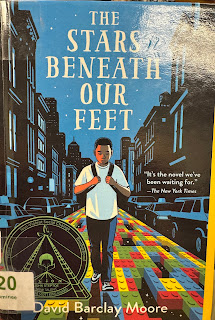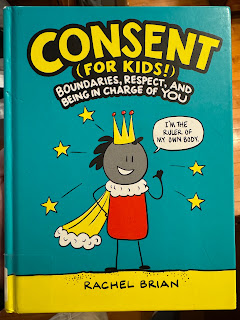Contemporary Realism
Contemporary realism is much like historical realism, only instead of taking place in a time period in the past, it takes place approximately when the book was first published. It is one of the more popular sections in my school library. A total of 21.09% of the fiction books in our library are classified as contemporary realistic fiction. Conversely, historical fiction accounts for 10.34%. (The second highest below contemporary realistic fiction is fantasy, with 15.51%.) While this is only one library, it shows the prominence of contemporary realistic fiction for the elementary school range. Contemporary realistic fiction allows for children to explore the world through characters like themselves, through times like they themselves are living in, focusing on realistic experiences that people their age face. As elementary school children are in the process of discovering themselves and their world, and developing their personalities, these stories give a window to a wider experience.
Contemporary realistic fiction can help children to feel like they are not alone, like they are part of a greater communal whole. These books can speak to children in ways that other types of fiction cannot, through the focus on relatable events in a relatable setting. Below are two pieces of contemporary realistic fiction that shows true to life experiences that children today are facing.
Moore, David Barclay. The Stars Beneath our Feet. Yearling. 294 pages. ISBN 978-1-549-09628-0
A story of coming to terms with the loss of a loved one through violence, and the aftermath of emotions that comes with it. Sadly, gang violence is a real part of life for many children across the country. In The Stars Beneath our Feet, 12-year-old Wallace "Lolly" Rachpaul's older brother Jermaine is killed in an act of gang violence. We watch as Lolly learns to accept the loss of his brother, and at the same time, find himself. He can escape from reality through his LEGO creations, which start taking over the family apartment before being moved to the rec center. He spends his free time escaping from reality by creating his own world of heroes and villains, a world he creates to try to make sense of the reality he is forced to face. Through experiences through the eyes of others such as the bullied "Big Rose," Lolly learns to understand his grief and move on. While the loss of his brother will always be a part of his life, maybe he can learn to not make it the only part.
King, Amy Saring. Attack of the Black Rectangles. Scholastic Press. 258 pages. ISBN 978-1-338-68052-2
In Attack of the Black Rectangles, Amy Saring King explores the concepts of censorship and being told by others what is right and wrong without having the opportunity to explore yourself. 11-year-old Mac Delaney opens a book (The Devil's Arithmetic by Jane Yolen) only to find many of the words blocked out with black marker. Mac discovers this to be the work of community know-it-all and self proclaimed protector Laura Sett, Mac's new teacher. While Sett has the good of the community in mind, Mac realizes (along with his friends and others in the town) that Sett's actions go against their own rights--rights to freedom of knowledge, freedom of speech, and freedom of experiences. King tackles these subjects through the eyes of an 11-year-old just trying to learn about the world. Throughout the story, we see Mac move from reluctant acceptance to a strong community voice for freedom of knowledge and the right to read and learn. Incredibly poignant in society today, Attack of the Black Rectangles teaches child readers the importance of standing up for what they believe in, and fighting against those who would try to censor the world around them under the guise of "safety."






Comments
Post a Comment